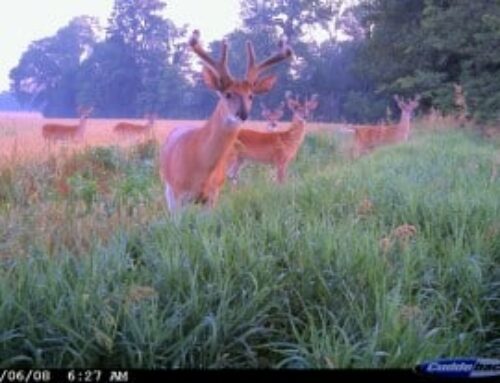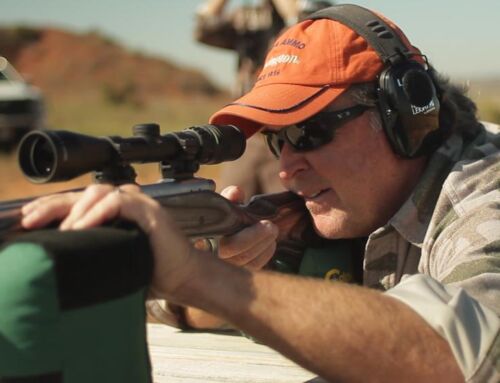 In late summer whitetails are genetically programmed to set up their home ranges near nutritious food sources and with heavy bedding cover close by. This way bucks can pile on the pounds (up to 20 percent of their body weight now through September) while only moving short distances.
In late summer whitetails are genetically programmed to set up their home ranges near nutritious food sources and with heavy bedding cover close by. This way bucks can pile on the pounds (up to 20 percent of their body weight now through September) while only moving short distances.
Finding bucks now is all about zeroing in on the best food sources. The top four: alfalfa, soybeans, clover and corn. If you have any of these fields on your land, or if the crops are planted on neighboring properties, you will have bucks in your woods to hunt.
It’s fairly easy to glass, locate and pattern bucks that come to feed in the alfalfa and beans fields. But setting up to put an arrow into one of those bucks in a few weeks is not so easy. Even though they have not been hunted for nearly a year, big, mature bucks are unpredictable, and many go largely nocturnal even in the early season.
Take, for example, one of the 4 .5-year-old bucks that researcher Clint McCoy tracked on a 6,000-acre property in South Carolina recently. The giant set up in a core area where he only had to move ¾ of a mile to eat in a soybean field. Clint’s data showed that he never got to the field before 9 p.m., and he was always back in bed before sunrise.
“There was only one option for a hunter to take advantage of this buck’s predictable feeding pattern: squeeze in as close to the buck’s bedding area as possible,” said Clint. “Although (the buck) never approached the bean field before dark, he was typically up and moving toward it 30 minutes before the end of shooting light.”
Clint surmised, and rightly so, that the only way a hunter could have a chance at this deer was to play the wind, push in with a tree stand closer to the buck’s bedding area and set up along the route to the beans in the afternoons.
When you hunt around fields in the early season, begin by hanging most of your stands on the edges, or just back in the brush along trails. That way you’re low impact and don’t pressure the area and the deer too much. But if you hunt hard for a while and don’t see a big deer before dark, don’t be afraid to get aggressive, sneak in closer to bedding area and hang a stand on a trail deeper in the woods.






How close to bedding area would you guys say is too close ? Most likely depends on the situation and the stand set up I’m sure. If you have a good spot to sneak in and out I’m thinking you can get pretty close. We have a stand that is right on the edge of a small bedding spot. It’s has produced very welll for us and its a spot that you can sneak in and out of pretty good.